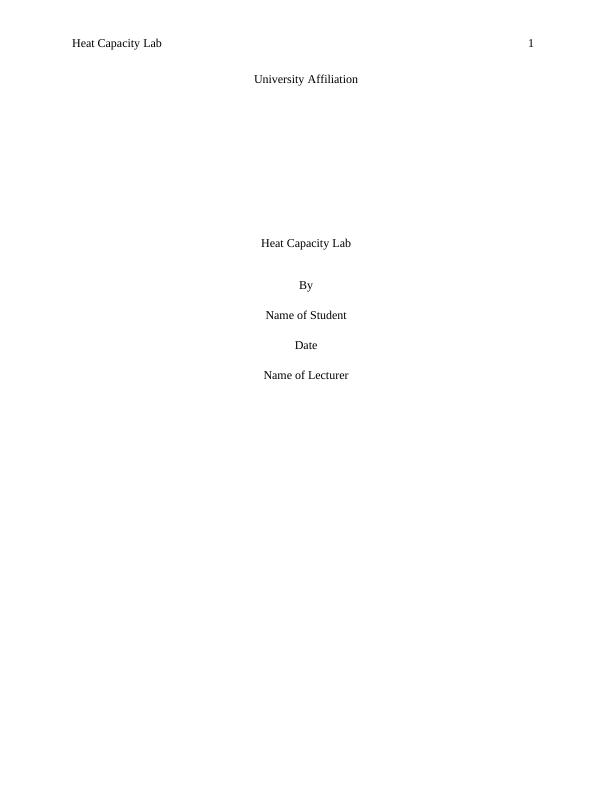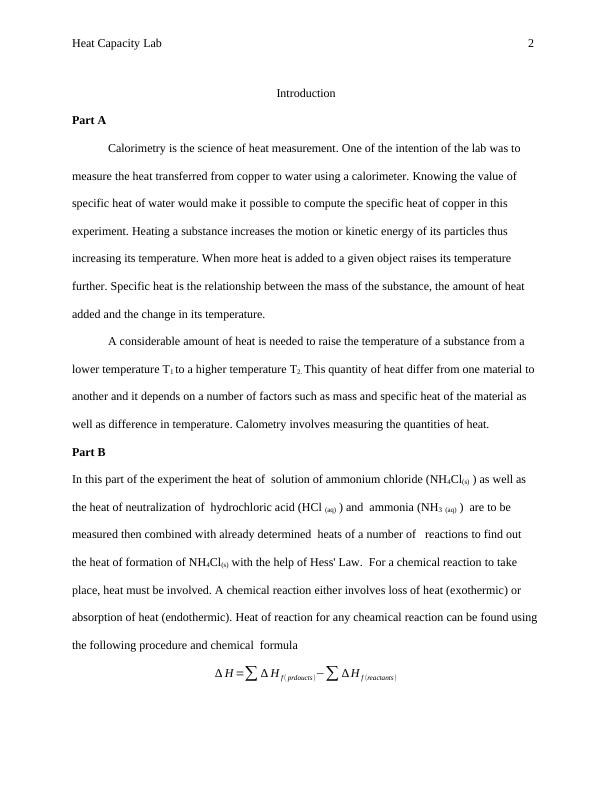Heat Capacity Lab
12 Pages1985 Words126 Views
Added on 2023-03-30
About This Document
This lab experiment focuses on measuring the heat transferred from copper to water using a calorimeter. It aims to determine the specific heat capacity of copper and the heat of formation of ammonium chloride. The experiment involves calorimetry and the application of Hess's Law. The results and calculations are provided.
Heat Capacity Lab
Added on 2023-03-30
ShareRelated Documents
End of preview
Want to access all the pages? Upload your documents or become a member.
Measuring Enthalpy Changes that Take Place in Endothermic
|20
|3698
|384
Graded Assignment
|8
|1147
|93
Enthalpy Change for Reaction of Anhydrous Copper (II) Sulfate with Water
|16
|2501
|71
Monitoring Corrosion
|33
|7396
|181
Assignment on Thermodynamics PDF
|3
|401
|47
Principles of Chemical Reactions
|4
|591
|465




